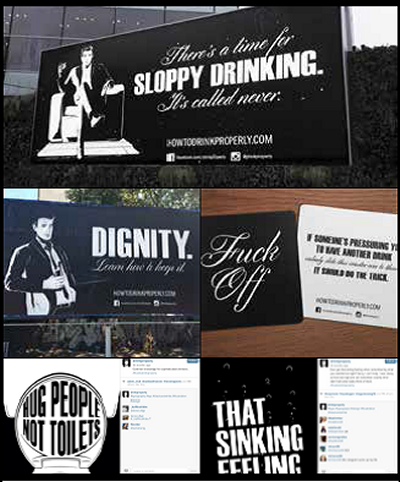The Jay Chiat Awards went live on warc.com today. The global 4A's Jay Chiat Awards recognise the best strategic thinking in the industry. Great strategies lead to ideas that engage us, move us to action, and even change the way we see the world. Here's a selection of my top picks.
Mountain Dew, a soft drink brand, wanted to regain relevance among its niche skater community target audience in Colombia. On-ground research revealed that skaters in Colombia do not leave home without a ring spanner in their pocket which they use to tighten or loosen their board screws. This presented Mountain Dew with the opportunity to put utility, via its packaging, at the heart of its campaign by turning its bottle caps into a 10mm ring spanner. The bottles sold out in under two days. Its reach surpassed expectations, having been adopted by the country's most famous skaters.

Apple, the iconic tech brand, wanted to showcase the superiority of the new iPhone 6 to customers and non-Apple advocates. But rather than talk about the technical features, this campaign let customers do the talking - via their own photographs. Thus user-generated content was at the heart of this campaign which led to 162 photographers being selected to feature in the world’s largest outdoor mobile photography gallery. Customers' real photos featured in outdoor, print and television ads in 75 cities in 25 countries.

This case study explains how Guinness, the beer brand, streamlined its global positioning from over 15 global endlines and five different strategic platforms to one global positioning based on the idea of "Made of More". Guinness embarked upon a mission to identify and celebrate real people that embodied its brand philosophy. The brand told emotive stories of real-life people that would resonate across markets and cultures – stories of people who were truly Made of More. This resulted in campaigns such as the brilliant ‘Score!’ with Basketball campaign. Guinness' brand strategy in Africa and its sponsorship activity is also discussed.
AirWick, the air care brand, needed to restore profitable growth, and do so on a global scale. To achieve this, AirWick repositioned from a purely functional message in favour of emotive branding. The core of its new brand message was a universal emotional truth that would translate across markets – scent has the transformative power to make a house feel like a home. The brand reframed its target audience from air care users to home creators. This lens opened up an entirely new way to look at the category. The strategy reversed AirWick's sales trajectory, grew the brand by 5% and outpaced the category by 28%.
Miller High Life, the beer brand, wanted to build relevance among millennials in the US. Research identified an attitudinal shift in this cohort - rather than a material-obsessed “have-it-all” generation, young people were actually “substance seekers” who were reinventing what it meant to be rich – valuing relationships and experiences over material possessions. The 360-degree campaign encouraged millennials to share their ‘rich’ experiences on social media. It resulted in improved brand relevance with millennials, halved its decline from the previous year and began stealing a competitor's share. Meanwhile the Bud Light: Whatever USA campaign sought to engage a 21-27 year old target audience in a highly experiential campaign that generated buzz and invited participation over the summer months.
DrinkWise Australia: How to drink properly
Sticking with the theme of alcohol, Drinkwise, a non-profit organisation in Australia, used a humourous, non-preachy tone, to encourage young people to drink in moderation. The campaign featured a James Bond-esque brand character who, with an unexpected, irreverent and profanity-packed message, advised young people they could still drink, but it was more fun to do so in moderation. The campaign helped start a generation of "classy" drinkers, was accepted by a cynical target audience, and influenced one in three to drink less.

United Nations Mine Action Service: Sweeper
How do you make people care about an issue that they are both geographically and emotionally removed from? Or in other words, how do you overcome the issue of "out of sight, out of mind"? The United Nations wanted to raise awareness and funding to tackle the problem of landmine contamination. So it created Sweeper, a mobile app that transformed a space into a virtual minefield. The fully immersive campaign was based in the New Museum in New York where users of the VR app could feel, experience and hear the terror of an exploding landmine.
McDonalds's, the fast food restaurant chain, leveraged the Super Bowl sporting event in the US to promote brand love and consumer participation. The campaign earned 1.2 million retweets in just nine hours—becoming the most retweeted brand ever in a single day. Warc subscribers can find out how it achieved this here.
Under Armour: I will what I want
This case study for Under Armour, the US sportswear brand, describes its repositioning from an uber-masculine sportswear brand to one aimed at a female target audience. Focussing on female athletic aspiration, the brand put real women's stories of achievement and success at the heart of its strategy. This ignited a cultural conversation, achieving a complete turnaround in connecting with its new target and a 28% sales increase.
This case study describes how Havells, an electronics brand in India, repositioned from a B2B brand targeting electricians, to a B2C brand, selling homewares aimed at housewives. Rather than focus on the rational benefits of its products Havells used an emotive and somewhat activist tone – taking a stance against the regressive mindset that automatically assigned kitchen and other domestic duties to a woman. Brand consideration increased from 22% to 47%, and sales increased 150% after six months.
Warc subscribers can view the full case studies here.
